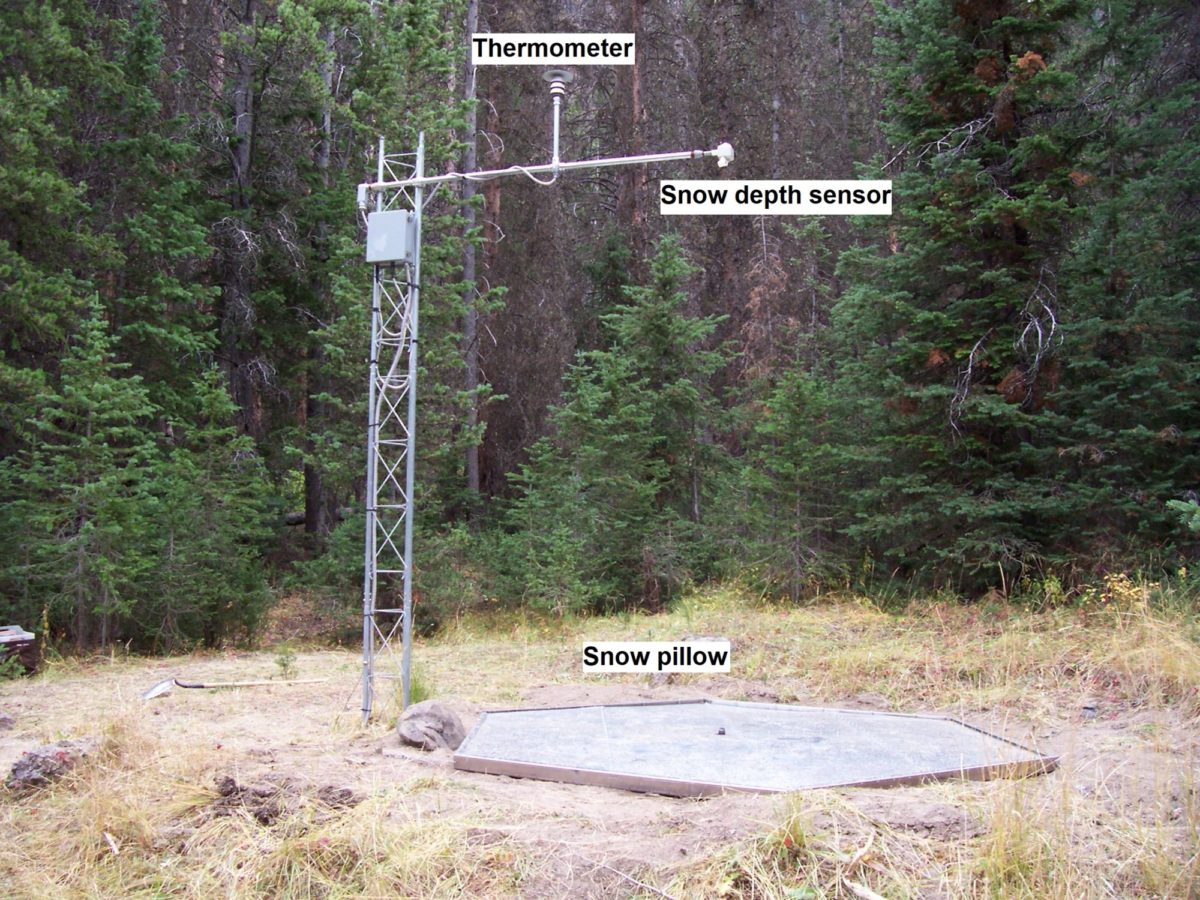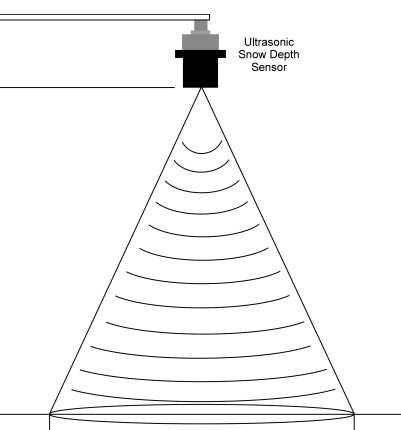An instrument that measures changes in the height of the snowpack.
In your yard, you can measure snow depth with a ruler, the same way a doctor measures your height with a yardstick. However, automated weather stations rely on ultrasonic waves, the same way bats stay oriented when flying in the dark. The ultrasonic sensor is placed well above the snow surface and shoots an ultrasonic ping down at the snowpack. The time it takes for the signal to bounce back to the instrument is used to calculate the height of the snowpack above the ground. Snow depth is prone to data error or misinterpretation for a number of reasons. First, during heavy snowfall events, the ultrasonic wave might reflect off of snowflakes falling through the air, rather than the snow surface. You might see some unexpectedly big readouts which require common sense filters. The other common source for misinterpretation is due to the snowpack settling (or shrinking in height) concurrently with the arrival of new snow. This effect is more pronounced during prolonged storms when the snowpack consists of feet upon feet of relatively low-density snow. For example, the total snow depth might be five feet of fluffy snow, but with the arrival of another foot of snow, that existing five feet compresses to four feet deep as a foot of new snow piles on top. In this case, the snow depth reading would be unchanged despite the new snow. Ski resorts and most snow safety operations have boards that are cleared regularly to account for this and more accurately measure storm totals.

